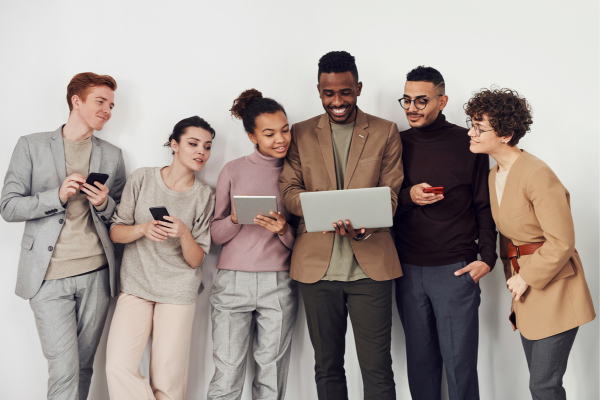
Value Engineering: Balancing Costs and Quality
Ever scratch your head over how to make your dream project unique without breaking the bank? Trust me, you're not alone. Whether you're an architect, builder, or someone interested in the AEC world, we've all been there. So, how do we square that circle? Enter value engineering.
Now, what's this fancy term all about? Is it just about going cheap? Or is it some secret sauce for perfect projects? Well, buckle up because we're diving deep into value engineering. We're talking about what it is, why it matters, and how it could be your game-changer for balancing costs and quality. Ready? Let's roll!
Why Does Value Engineering Matter?
Let's get real for a second. You've got this fantastic project in mind, right? The design's slick, the features are excellent, and you can't wait to see it come to life. But hang on, what about the budget? We all know money talks.
That's where value engineering steps in. It's like the superhero of the building world. But it's not about going cheap or cutting corners. No way! Value engineering is about getting the most bang for your buck while keeping your project remarkable.
So, it's like having your cake and eating it too. You keep the stuff that makes your project shine and find smart ways to manage costs. Value engineering ensures your project looks good on paper and thrives in the real world. And let's be honest, who doesn't want that?
Industry Applications
We've chatted about why value engineering is a big deal, but let's get specific. Where exactly does this superhero of thoughtful planning shine the most in the AEC world?
First, if you're in residential construction, value engineering is your secret weapon. You can tweak materials or designs to give folks the home of their dreams without making them go broke. It's like making everyone's dream home a reality, even for those on a budget.
Then there's the massive stuff like bridges, highways, and all that jazz. Here, value engineering is a game-changer. We're talking about projects that cost millions or even billions. Thoughtful planning can save money and make things safer and more efficient.
And let's remember those fancy green buildings. You know, the ones that are all about saving the planet? Value engineering helps you pick eco-friendly materials and tech that won't cost you an arm and a leg.
So, value engineering has got something for you no matter what you're building, from homes to highways to high-rises. It's like the Swiss Army knife of the AEC industry. Pretty cool, huh?
Where Did It All Begin?
Let's hit the rewind button for a moment. Where did this whole value engineering thing start? Well, it goes way back to World War II. Yep, you heard right! Back then, folks only had a few materials to work with. So, engineers had to get creative.
They had to figure out how to make tanks and planes without wasting resources. So they got smart about it. They found ways to use less but still get the job done.
Fast forward to today, and guess what? That same innovative thinking is super important for our buildings and projects. With costs going up and projects getting complicated, value engineering is the name of the game. It's all about making intelligent choices that stand the test of time. And let's be honest, who wouldn't want to be a part of that?
The Three Pillars of Value Engineering
It's time to get down to the meat and potatoes of value engineering. Picture it like a three-legged stool. You've got Function, Cost, and Quality. Take one leg away, and the whole thing gets wobbly.
Function: This is all about the "why" of a thing. Like, why does that wall need to be so tall? Or why use marble when something else might work? When you understand the "why," you can get smart about other options.
Cost: We're talking dollars and cents, but don't just think upfront fees. Look at the big picture. Will it be expensive to maintain? What about energy bills? All this money talk helps us make more intelligent choices.
Quality: Last but not least, this is the "wow" factor. It's the stuff that makes your project pop. Whether it's durability or just looking super cool, you want quality to ensure you get all the benefits.
So, think of these three as your AEC dream team. They help you balance what you need, what you can afford, and what will make your project stand out. And who doesn't want that sweet spot, right?
The Real-Life Scenario
Let's get into some real talk with a quick story. Picture this: You're in charge of a new apartment building. Your original plan? High-end hardwood floors all the way. Who wouldn't love that? But then, the budget kicks in, and let's wait to start on the environmental side.
This is where the magic of value engineering takes the stage. You start thinking, "What if we go with engineered wood?" It still looks impressive, but it's easier on the wallet and Mother Earth.
See what happened there? You kept the vibe and the quality, but you saved some dough and did a solid for the planet. That's value engineering in action, folks. It's about making changes that keep your project excellent without emptying your pockets. And honestly, it feels like a win-win.
The Human Element
Let's switch gears for a second. We've been talking a lot about materials and budgets, but let's remember the real stars of the show: the people. I mean, buildings are made for folks to live, work, or play in.
So, value engineering isn't just about things; it's about improving people's lives. It's thinking about stuff like, "Will this space make folks feel at home?" or "Is this design gonna be easy for everyone to get around?"
The human touches turn a good project into a great one. Adding a ramp for easy access or using natural light makes a room feel cozy. Whatever it is, it's all about thinking of the folks using the space. And at the end of the day, that's what counts.
Client Relationships
Let's switch gears and discuss something we all care about: relationships. Not the romantic kind, though! I'm talking about the bond between you and your clients. Trust me, when it comes to AEC projects, a little trust goes a long way.
So, how does value engineering fit into this? Simple. It's all about transparency. Clients feel in the loop when you break down the costs and benefits of different choices. They know you're not just looking to make a quick buck but want the best for the project.
Let's say you're proposing a change to save some cash but keep the project top-notch. Your client is going to love that! It's a win-win, and it builds trust. The next time they have a project, who will they call? Yep, you got it, you!
Value engineering isn't just thoughtful planning; it's also intelligent relationship-building. You're showing your clients that you're in it for the long haul, thinking about what's best for today and down the road. And let me tell you, folks, that's the kind of thing that turns one-time clients into lifelong partners.
Avoiding Common Pitfalls
Before we go high-fiving and diving into our next project with value engineering, let's pump the brakes. There are some easy traps to fall into. The biggest one? Value engineering is just a fancy way to say "cost-cutting." Nope, that's a no-go.
See, when you only focus on saving money, you might end up with something cheap but not last. Or worse, a project that needs to be more user-friendly or cool-looking. That's not a win; that's a shortcut to regret.
The trick is to keep your eyes on the prize: a top-notch project that still fits the budget. So, don't just slash costs and call it a day. Look for the sweet spot where you can save cash but still get something durable, usable, and downright awesome.
Remember, value engineering is all about balance. You're not just trying to save money; you're trying to make the best possible choices. And when you get it right, trust me, it feels like hitting a home run.
Final Thoughts
We've been on quite the ride, haven't we? We've broken down what value engineering is, why it's a game-changer, and how to avoid those pesky pitfalls. It's not just about crunching numbers or choosing cheaper materials. No, it's way more significant than that.
It's about building something that stands the test of time—something people will love and use. It's making choices that are good for your wallet, the folks who'll use the space and even the planet.
Let's take a moment to think about our next big project. With value engineering on our side, we've got the tools to make something extraordinary. Something that's not just cost-effective but also downright excellent.
Are you excited to get out there and make some value-engineered magic happen? Me too! Let's build something extraordinary.
Are you inspired to bring value engineering principles into your next AEC project? Contact us at BidLight, where we're committed to providing cutting-edge tools to turn your vision into a cost-effective reality.



